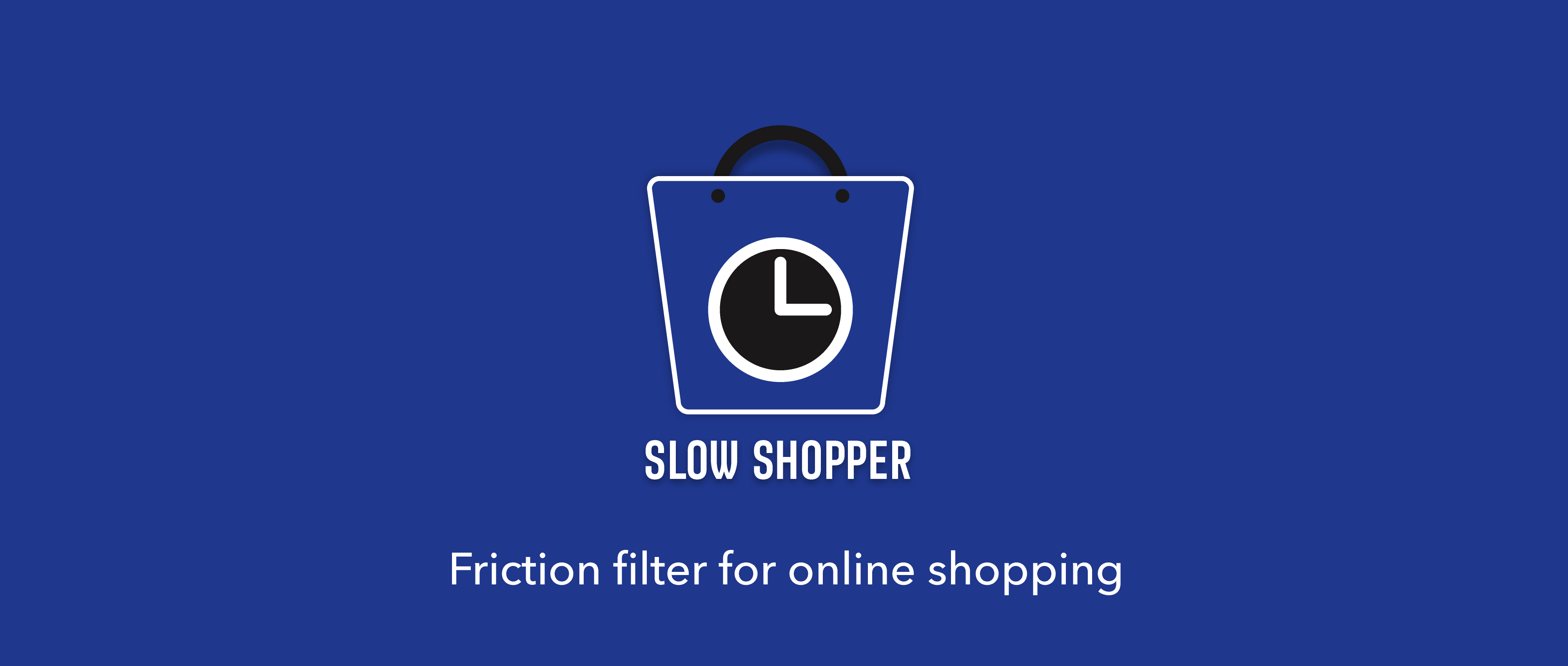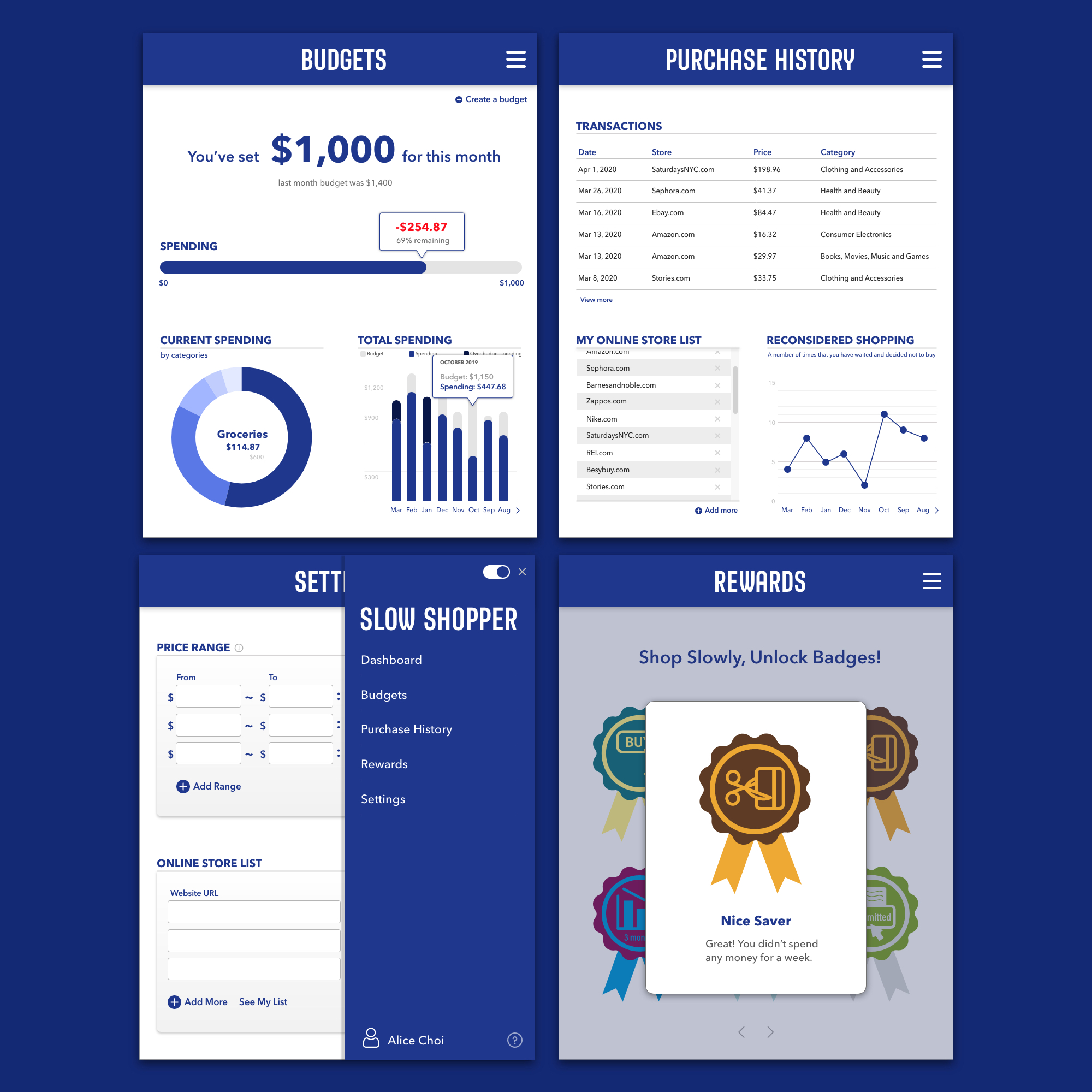Desirable Friction
Hye Yun Choi (Alice)
Friction is defined as the resistance that one surface or object encounters when moving over another. Metaphorically, we can understand friction as the force needed to achieve a goal or perform a task. In this thesis, I’m focusing on friction in digital experiences, specifically how the lack of friction defines the designs of interfaces that are easy to use, convenient, accessible, fast and effortless. The power dynamic between humans and technology has shifted. Technology no longer simply facilitates human living experience; rather, it controls human perception and action. Given the current trend of frictionless design, I am questioning whether designers are creating a desirable future or eroding human ability. Are we moving towards what we want to be moved toward?

Capstone: Slow Shopper
This capstone is specifically about friction in the online shopping experience. Frictionless purchasing, digital communication, and information through infinite feeds influence us to privilege impulse over the intention. Humans act as the blinded horse, oblivious to the dangers that surround us, or to the structures that make what we do possible, and because we cannot see these things, we run faster, pursue more efficiency and convenience.
Capstone: Slow Shopper
In order to create a slower experience for more cognitive effort, Slow Shopper Chrome extension provides a good amount of friction in the online purchasing process for users. By having moments of pause to think about one’s behavior more critically, users can prevent themselves from becoming blinded shoppers.Slow Shopper shows that more friction leads to thinking about the budget then when it is less. Without friction, online consumers tend to just buy things, not knowing what it costs, however, with friction, they start to think about more aspects of their behavior through the journey.

Although Slow Shopper is not a budget planning financial app to help users save money, budgeting can actually be an outcome of Slow Shopper. It functions as a self-reflective tool that allows the user to build their own budgeting habit and restrain themselves. The added friction does not prevent the user from spending money but rather induces behavior change.